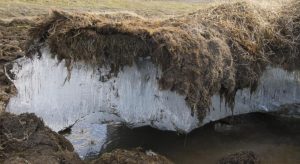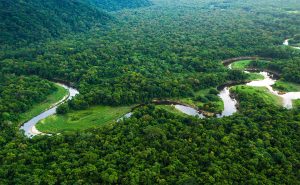
61 interesting facts about rivers
- 👁️ 1048
Rivers are essential features of the Earth’s landscape, shaping the world around us and providing numerous ecological and societal benefits. From their role in supporting ecosystems to their significance in transportation and agriculture, rivers hold a special place in human civilization. With their diverse characteristics and remarkable histories, rivers continue to captivate us. Here are several intriguing facts about rivers:
- The longest river in the world is the Nile, stretching approximately 6,650 kilometers (4,130 miles) across 11 countries in Africa.
- The Amazon River in South America is the largest river by volume, discharging more water into the ocean than any other river.
- The Mississippi River is one of the most iconic rivers in the United States, flowing through or along the borders of 10 states.
- The Ganges River in India is considered sacred by Hindus and plays a significant role in religious ceremonies and rituals.
- The Yangtze River in China is the third-longest river globally and holds immense cultural and historical importance.
- The Thames River in England, flowing through London, has been a vital waterway for commerce and transportation for centuries.
- The Danube River is Europe’s second-longest river, passing through ten countries and connecting various cultures and landscapes.
- The Mekong River in Southeast Asia supports one of the most diverse ecosystems on Earth, providing habitats for thousands of species.
- The Rhine River in Europe is an important transportation route, connecting several industrial cities and serving as a crucial trade artery.
- The Colorado River carved the iconic Grand Canyon in the United States, showcasing the immense power of rivers in shaping landscapes.
- The Volga River in Russia is the longest river in Europe and holds great economic and cultural significance for the region.
- The Indus River in South Asia is one of the world’s oldest river systems, with a rich history dating back thousands of years.
- The Nile Delta in Egypt, formed by the Nile River, is one of the most fertile and densely populated regions in the country.
- The Rhône River in Europe flows through Switzerland and France, eventually reaching the Mediterranean Sea.
- The Congo River in Central Africa is the world’s second-largest river by discharge volume and plays a crucial role in the region’s ecosystems.
- The Niger River in West Africa supports a diverse range of wildlife and sustains the livelihoods of millions of people.
- The Tigris and Euphrates Rivers in the Middle East have been significant in the development of ancient civilizations, including Mesopotamia.
- The Amazon River basin is home to the largest rainforest on Earth, known as the Amazon Rainforest.
- The Zambezi River in Southern Africa is famous for the spectacular Victoria Falls, one of the world’s largest waterfalls.
- The river Severn in the United Kingdom has the second-highest tidal range in the world, creating the Severn Bore, a tidal wave phenomenon.
- The Rhine Falls in Switzerland is the largest waterfall in Europe, known for its impressive volume and natural beauty.
- The Yellow River in China is known as the “Mother River of China” and is a vital water source for agriculture.
- The Orinoco River in South America is home to diverse wildlife, including jaguars, capybaras, and pink river dolphins.
- The River Thames has been an inspiration for numerous artists, poets, and writers throughout history, immortalized in literature and art.
- The Nile River was of paramount importance in ancient Egyptian civilization, serving as a lifeline for agriculture and transportation.
- The river ecosystem provides habitat for countless species of fish, birds, mammals, and plants, supporting rich biodiversity.
- Rivers act as natural corridors for migration, allowing species to move and disperse across landscapes.
- The Colorado River has been extensively dammed for hydroelectric power generation and water storage, altering its natural flow.
- The River Shannon in Ireland is the longest river in the British Isles, offering scenic landscapes and recreational opportunities.
- The Ganges River dolphin, also known as the Gangetic dolphin, is a freshwater dolphin species found in the Ganges and Brahmaputra Rivers.
- The River Severn Estuary experiences one of the largest tidal ranges in the world, resulting in the Severn Bore tidal wave.
- The Amazon River contains numerous islands, including the famous Anavilhanas Archipelago, one of the largest river archipelagos globally.
- The Thames River has a diverse array of wildlife, including seals, otters, and various bird species, adapting to an urban environment.
- The River Nile has been a subject of exploration and fascination for centuries, attracting adventurers and historians alike.
- The Danube River passes through the Danube Delta, the second-largest and best-preserved river delta in Europe.
- The River Tiber in Italy flows through Rome, playing a significant role in the city’s history and culture.
- The Ganges River is a holy river in Hinduism, and many devotees come to its banks for religious rituals and ceremonies.
- The River Clyde in Scotland was once a hub of shipbuilding and maritime trade, contributing to the industrial growth of Glasgow.
- The River Avon in England flows through Stratford-upon-Avon, the birthplace of William Shakespeare.
- The Mississippi River Delta is a vast wetland region, providing critical habitat for migratory birds and supporting commercial fisheries.
- The River Thames has played a significant role in British history, witnessing events such as the Great Fire of London and the Queen’s Diamond Jubilee Pageant.
- The riverine plains along the Brahmaputra River in India and Bangladesh are known for their fertile soil and agricultural productivity.
- The River Mersey in England has played a crucial role in the industrial development of cities like Liverpool and Manchester.
- The River Dee in Scotland is famous for its picturesque landscapes and salmon fishing.
- The River Avon is home to the Clifton Suspension Bridge in Bristol, a famous landmark and engineering marvel.
- The River Tay in Scotland is renowned for its salmon fishing and picturesque surroundings.
- The River Thames has been an inspiration for many paintings, including J.M.W. Turner’s renowned works depicting the river and its surroundings.
- The Rhine River has been an important trade route for centuries, facilitating the movement of goods and fostering cultural exchange.
- The River Severn has a notable tidal bore, attracting surfers and spectators who witness the natural phenomenon.
- The River Nile’s annual flooding played a vital role in ancient Egyptian agriculture, depositing rich silt and ensuring fertile lands.
- The River Thames has been used for recreational activities such as rowing, boating, and sailing for centuries.
- The Volga River is Europe’s largest river in terms of length, flowing through the vast landscapes of Russia.
- The River Thames is home to various species of fish, including salmon, trout, and eels, supporting recreational angling.
- The River Rhône is an important source of hydropower, with several dams constructed along its course.
- The River Shannon in Ireland is a popular destination for boating and cruising, offering scenic views and tranquil waterways.
- The River Avon is associated with the literary figure William Shakespeare, who spent a significant part of his life in Stratford-upon-Avon.
- The River Thames has witnessed historical events such as the construction of iconic landmarks like Tower Bridge and the Houses of Parliament.
- The Rhine River passes through the Rhine Gorge, a UNESCO World Heritage site known for its stunning landscapes and castles.
- The River Shannon is dotted with islands, some of which serve as nature reserves and bird sanctuaries.
- The Ganges River is deeply intertwined with the spiritual and cultural traditions of India, attracting millions of pilgrims each year.
- The River Thames has been an inspiration for countless poems, songs, and works of literature, symbolizing the heart of London.
Rivers hold a significant place in our world, shaping landscapes, supporting ecosystems, and contributing to the cultural, economic, and ecological well-being of societies. From the iconic Nile and Amazon to the storied Thames and Ganges, rivers captivate us with their beauty, power, and historical significance. As we continue to appreciate and study rivers, let us also recognize the importance of preserving and protecting these precious waterways for future generations to enjoy and cherish.











